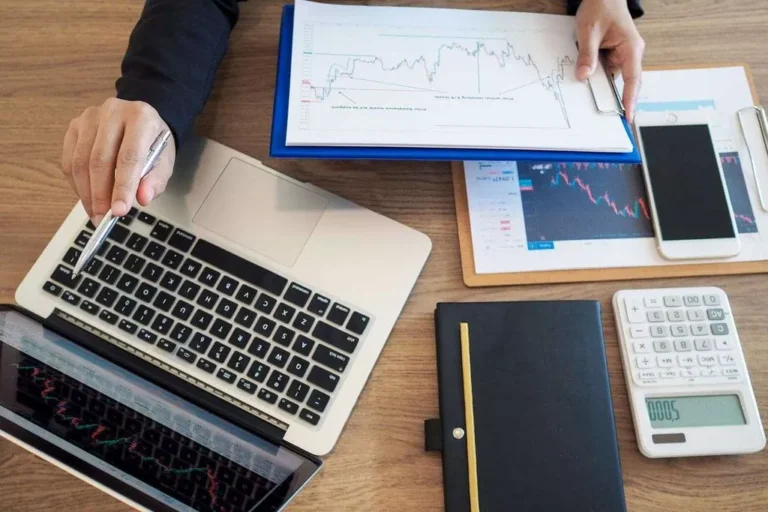Crypto Prediction Markets What Are They and How Do They Work?
Content
If your market is unlikely to resolve, participants will find other uses for their time and money. The chance here has to be small, well under 50%, and much lower if time to resolution isn’t quick. Years-long markets that are unlikely to trigger are going to have severe issues. If your market isn’t https://www.xcritical.com/ well-defined, arguments over price become arguments over the rules, which turn into very angry participants.
How Does a Prediction Market Work?
All you need to do is choose something to bet on, connect your wallet, approve the USDC, and wait and see what happens. Each share of “Yes” and “No” will have a price between $0.01 and $1 in USDC. This means the trade is collateralized no Stablecoin matter which outcome is realized.
How Do Prediction Markets Work?
It utilizes a variety of different technical indicators to watch trends and create signals. These indicators include moving averages, Bollinger Bands, relative strength, moving average convergence divergence, and oscillators. In stock option pricing, stock market returns could be assumed to be what are prediction markets martingales.

How Do You Track Market Performance?
They would like to know the contingent probabilities around a cluster of events and actions and the reasoning behind those probabilities. For example, a forecasting team could provide a cluster of conditional predictions around the topic you select, and deliver pages of analysis behind their predictions. It’s not just that you can hire forecasters though, which after all is a recent development. We suspect that much demand for information about the future is satisfied by existing markets and firms. If it weren’t, wouldn’t private companies have taken up forecasting and prediction markets more quickly in the first place?

Given these conditions, it is not a mystery why there aren’t more and larger prediction markets. We’re left with the small markets and wide spreads we find on Kalshi, PredictIt, and other prediction markets. We suspect there is simply very little demand for hedging events like whether a certain law gets passed; there is only demand for hedging the market outcomes those events affect, like what price the S&P 500 ends the month at.
- Given these conditions, it is not a mystery why there aren’t more and larger prediction markets.
- If so, maybe the idea about incentivizing the wisdom of the crowd goes more legit.
- Betting your bracket before the tournament, despite brackets being something presidents do to show they’re in touch, isn’t a thing for serious money.
- The most significant factor in explaining future price returns was valuation as measured by the price-to-book ratio (P/B).
- Decentralized prediction markets allow users to create and trade on prediction contracts, which are financial instruments that pay out based on the outcome of an event.
- These advantages are reiterated by multiple studies of centralized prediction markets.
A typical prediction market contract is set up to trade between 0 and 100%. The most common form of a prediction market is a binary option market, which will expire at the price of 0 or 100%. Prediction markets can be thought of as belonging to the more general concept of crowdsourcing which is specially designed to aggregate information on particular topics of interest. The main purposes of prediction markets are eliciting aggregating beliefs over an unknown future outcome.
A prediction market or betting market is an exchange-traded market where individuals can bet on the outcome of a variety of events with an unknown future. The events range from future commodity prices, yearly revenue results of a company, exchange rates, etc. A well-known public prediction market, Predictlt, predicts the events in the financial and political markets. Election prediction markets are a type of prediction market in which the ultimate values of the contracts being traded are based on the outcome of elections. The main purpose of an election stock market is to predict the election outcome, such as the share of the popular vote or share of seats each political party receives in a legislature or parliament.

A prediction or betting market is a platform where individuals predict and bet on future events. Based on the success of the prediction, the participant makes profits or losses. Hence, the primary purpose of this market is to provide a more accurate and efficient way to predict the likelihood of future events. This is usually the case because there are certain individuals in the market who are slightly ahead of the curve in terms of acquiring, understanding and taking action based on the data they receive. Just recall $UST’s de-pegging event and the quick outflow of funds from Anchor. It is because of this very nature that prediction markets are considered a better utility tool for corporations/organizations to gauge the market than doing internal rounds of predictions.
The second feature is that inelastic participants are often willing to pay a small premium for market access. But in doing so, investors or bettors of these kinds create a pool of surplus that smart participants try to obtain, which in turn drives prices toward efficiency. Think about depositing your paycheck in a retirement account – the goal is to build a diversified portfolio for long-term gains, not to eke out every cent of possible return.
The headline problem is that the polls failed in several recent elections, often spectacularly. Burned by such errors, and uncertain about the validity of the data, almost every new poll today comes with a caveat about the ways in which it could be just plain wrong. For example, if Goldman Sachs wants to buy the shares of the Bank of Montreal for $100, it is recorded as a bid in the ledger. On the other hand, if Goldman Sachs wants to sell the shares of the Bank of Montreal for $100, the transaction will be recorded as an ask in the ledger. A trade is only executed when the bid and ask price of the buyer and seller match.
Prediction markets, also known as betting markets, are fascinating financial platforms where predictions about future events are made and traded. These markets offer a unique approach to forecasting, combining finance, probability, and crowd wisdom to predict outcomes ranging from election results to corporate earnings. Polymarket offers a wide range of markets including political events, financial market movements, sports outcomes, and other socio-economic events. Examples include predictions on the U.S. presidential elections, cryptocurrency price movements, and major sports championships. Polymarket is a decentralized prediction market platform on Polygon that allows you to bet on the outcome of various real-world events. This platform is gaining relevance in the crypto landscape due to its unique approach to market predictions and the integration of stablecoins like USDC for betting, which ensures liquidity and stability in transactions.
However, its legal restrictions in the U.S. and potential for technical issues are notable weaknesses. Polymarket differs from traditional prediction markets like PredictIt in several key ways. Polymarket is decentralized and operates on the Polygon network for scalability, offering lower fees and greater privacy. PredictIt, on the other hand, is a centralized platform regulated by U.S. authorities, which imposes certain limits on trading and market creation. While PredictIt is accessible to U.S. residents, Polymarket provides a broader range of markets and more flexibility in trading.
But we shouldn’t get too ambitious, and keep an eye on the practical needs of participants. In my experience with prediction markets, important hidden information other traders could know acts as an outright veto on the market. It might not do that if the market had enough ‘natural’ trading volume, but that’s a high bar to clear. I’m a little late on this, which was an old promise to Robin Hanson (not that he asked for it). I was motivated to deal with this again by the launch of Augur (REP), the crypto prediction market token.
Moreover, the predictions in DPMs will reflect the public’s opinion, proportionate to their individual conviction or confidence in the likelihood of a particular outcome occurring (i.e. “Outcome X”). Remember we are talking about Decentralized Prediction Markets, not Decentralized Sportsbooks. And the more users betting on a specific event outcome, the more likely they think that outcome will happen. In this simplified example, users who correctly predicted the election outcome received a payout of $1 for each token they held.
 KONTAKT Z EKSPERTEM
KONTAKT Z EKSPERTEM


 DRUK
DRUK